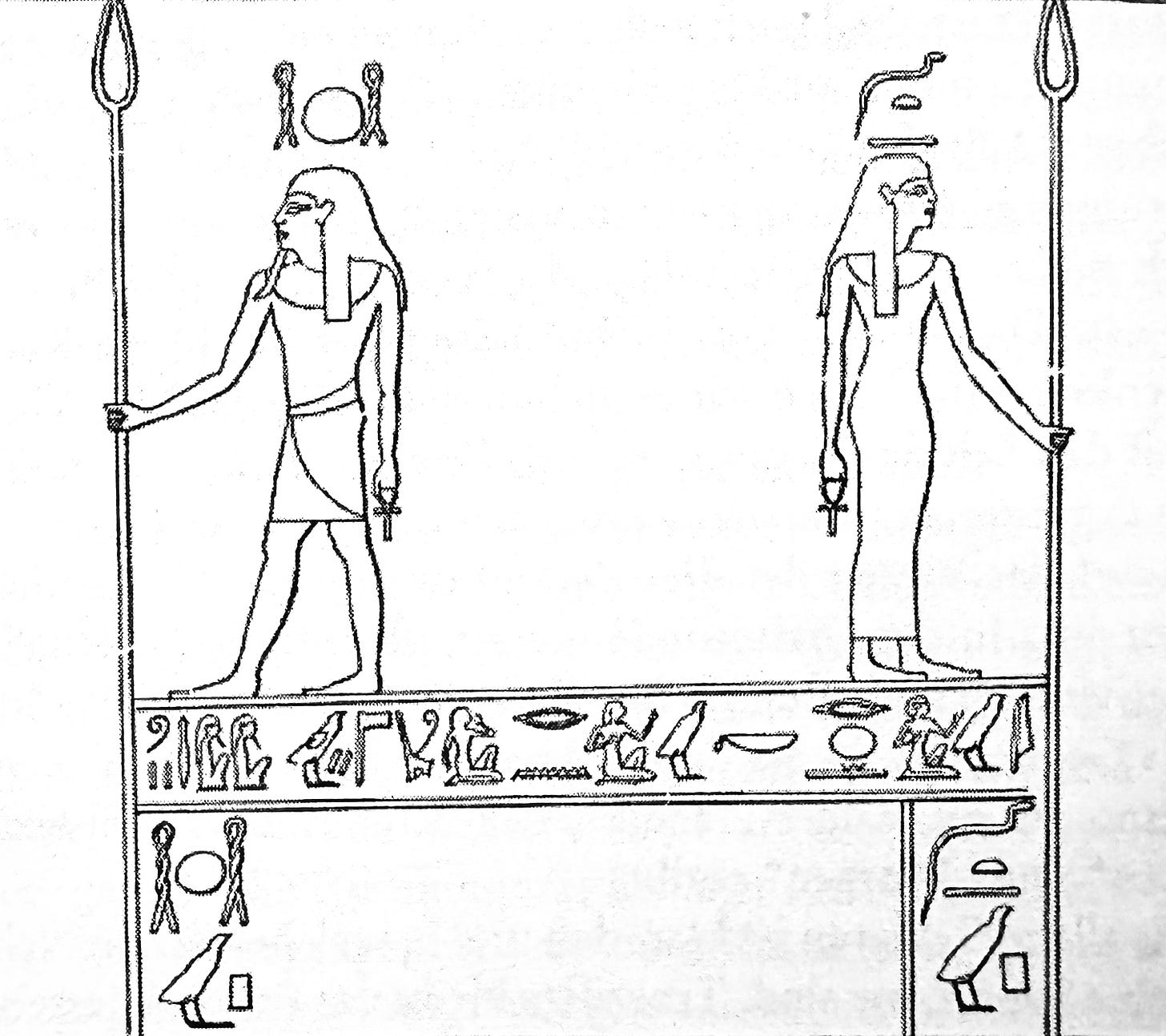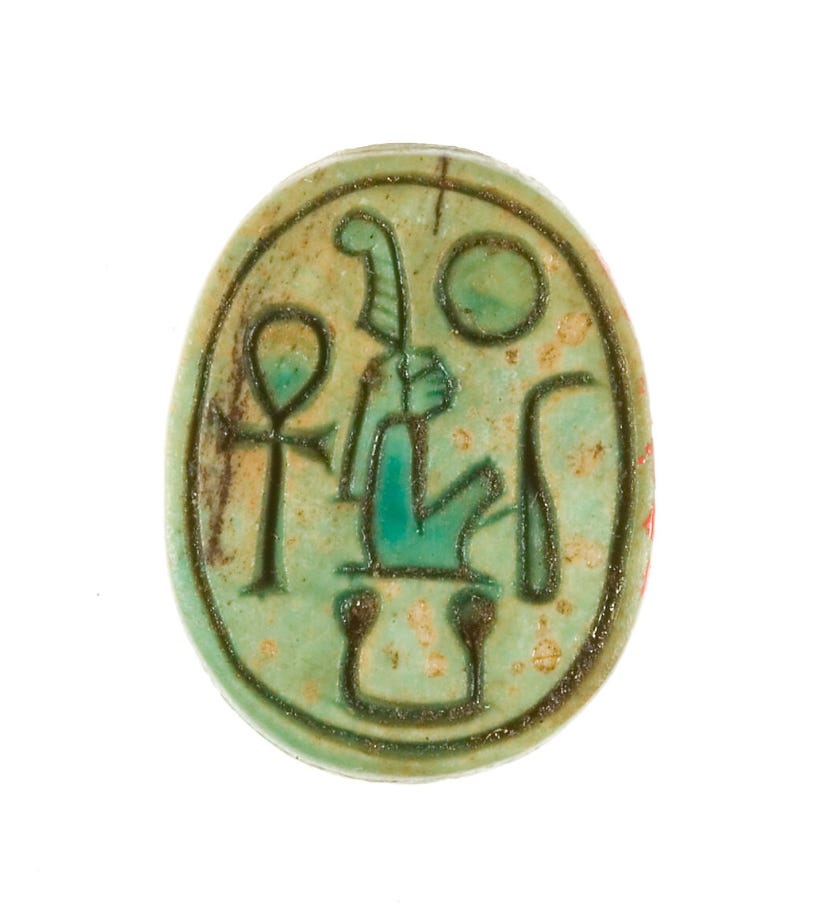Who reveals this is to die a violent death, for it is a great mystery
Ancient Spell - Papyrus Salt 825, XVIII, 1-2 ed. Derchain 1965 I.
Death in Ancient Egypt
Let us imagine for a moment that Death is nothing but a change of scenery - all the limitations of the material realm that seem to surround us are now illusory and fall away. We are thrust into a new form of being, an immaterialization, a world of endless space and possibility. Imagine your horror and confusion upon realizing that you had all your life to prepare for this incorporeal state, but now it is too late, and your metaphysical remains float through deep space, unable to steer or navigate through this shockingly new way of existing.
For Ancient Egyptians, who believed that Death merely added a new dimension to existing, this was a hard reality and they were convinced that life's sole purpose was to prepare for this state of existence incessantly, so much so that they engineered their entire civilization around it.
To understand how the Ancient Egyptians conceptualized their entire existence as something that reaches beyond death, we need to examine what it was precisely that staying alive after death meant to them. The famous Egyptologist Jan Assmann once remarked in his essential essay on the Ancient Egyptian concept of time that it is within their definition of TIME & TIMELESSNESS where we glimpse what is at the very core of the Ancient Egyptian belief system and where we learn how they conceptualized the totality of existence and its confines.
The Nature of Time & Being
The abstract, virtual notion of time and its coming into being was an integral part of the Ancient Egyptian creation myth, recreated in every temple architecture from Abydos to Karnak, and ritualized within its most sacred chambers; The wisdom about existence itself was encoded within their sun theology and the key to the most profound knowledge in the universe was kept inside the temple walls, revealed only to the initiated (see Plato’s, Timaeus) and a particular class of priests.
Ancient papyri, like the Papurys Salt 825 pictured above, warned the careless inquisitor about the consequences of their revelation (see quote).
To the Egyptians time was one of the most mysterious axioms governing our world, and they revered it in all of its facets, from continuity and linear time to eternity and longevity. Time was regarded as a great mystical power in ancient Egypt. It was a dynamic forcefield that held the key to the very fabric of our universe. Time is the basis for understanding their concept of being, existence, the nature of the universe, the human soul, and essentially our purpose in this world.

They seemed to view time as a force that needed to be ritualized and ordered rather than an occurrence just to be observed. To them, it was a measurable power that existed on different planes and in multiple aggregates or conditions. There was the time as we know it, which they believed to be cyclical, physical, ever repeating which was called Neheh time. It governed all recurring cycles like the Nile flood or the sun and moon while its fabric sustained the portion of life force given to each of us. The Djet time, written with the hieroglyph of a cobra, was believed to be metaphysical and atemporal, or - as the famous Egyptologist Jan Assmann called it - virtual time. These concepts are extremely important since they define the two opposing dimensions separated by a membrane that our physical bodies cannot cross, separated by a barrier that we call Death. How to pass through this temporal membrane and maintain your existence on both sides of this barrier was not only extremely important, it was at the core of their entire belief system.
The true nature of the temporal forces binding the dimensions of our universe together was shrouded in secrecy and severely protected, it also constituted the basic Egyptian framework of being and their concept of reality.
The connection between the cyclical time (Neheh) with its circle of life and what we call eternity (Djet) positions us as human beings within a larger temporal totality of the cosmos.
To use an allegory, we are creatures on a little ice rink floating on a large ocean of time, and within our given timespan, our life, we can shape the materialized part of the ocean and ourselves until this given lifetime melts away. Upon our return to the vast body of water that we came from it is decided whether we remain conscious of our existence or just evaporate into nothingness. This return into a state of disordered non-existence is what the Ancient Egyptians referred to as the second death.
But if the nature of our being “alive” as opposed to being dead is a mere transition, and what we formed out of the water is of no consequence, what part of us remains conscious? And since we are all just star dust formed out of an ocean of eternity, what even constitutes this “self” we are trying to maintain in the non-temporal afterlife?
The Ancient Egyptian Concept of Souls
In Ancient Egypt, they had several conceptions of Soul that existed in a multitude of states and it evolved over two and half millennia. They were each imbued with different abilities and functions.
The KA was your spirit, a higher form of self, a level of consciousness that your lower entities of the soul might not even perceive or be aware of. It was written in the Hieroglyph of the two outstretched arms and closely connected to the concept of kingship whose KA was connected to the realm of Gods and, therefore, a powerful mediator between both worlds or dimensions of being.
The so-called BA was believed to be an aspect of the “soul” or aliveness that could be viewed as conceptualized vitality, the essence of being alive; it was symbolized through the hieroglyphic sign of the soul bird.
The ba was not a separate being but a powerful aspect or expression of the same person that was within the person even before birth. As the ba was not usually associated with the living, it was believed to become manifest at the time just at the point of death.
The BA encapsulated your uniqueness, your essence; whatever you lived and learned in this life was encompassed in your BA, and in instances where Ancient Egyptian texts mention magic, the BA.W (hieroglyphic transcription, speak BAU) of a person as a source of their magical power.
The Purpose of Existence: “Becoming” (Hpr) and Higher Order (Ma’at)

So we learned about the Egyptian notion of time as a powerful dimensional forcefield in which we are brought to become - written in the Hieroglyph of the Scarab, which means to come into existence, to become, evolve, to occur and to transform.
Within the allegory of the timeless ocean - the Djet time - there is an idea of us, an acorn of who we are and it is only in this dimension of the powerful cycle of life and death where the material is constantly manifested - the Neheh time - where we can go from a floating unrealized idea into growth and actualization.
There are parts of us - concepts of the soul BA & KA - that visit this side of time to enter the process of Becoming/Hpr so we can go back to the side of time where all growth and expansion are suspended and exist in timelessness. Almost like stepping in and out of gravity - there is a sort of floating state where things stay either unrealized or eternal and then there is our side of the spectrum where time expands and progresses and thought or idea is formed and realized through matter.
The Neheh time is where things become, are being formed, and take shape - the Djet time is the dimension where everything exists as a potential. Like the potential formation of a sun within the gravity of a collapsed nebula or the idea of an oak tree within an acorn. Within the Djet time, existence is pure concept or Platonic idea before being given form in our dimension of time.
This process of becoming and the interconnectedness of both time dimensions is at the heart of Egyptian mysticism and symbolized in the union of Re and Osiris.
When human awareness meets our capacity to create meaning within this forcefield of time, our own life force becomes a beacon of cosmic order, or what the Ancient Egyptians called Ma’at.
Our purpose, according to this Ancient Egyptian theology, is to deter chaos by creating coherence between these forces by embedding dimensions of meaning through ritualized connection with the divine.


